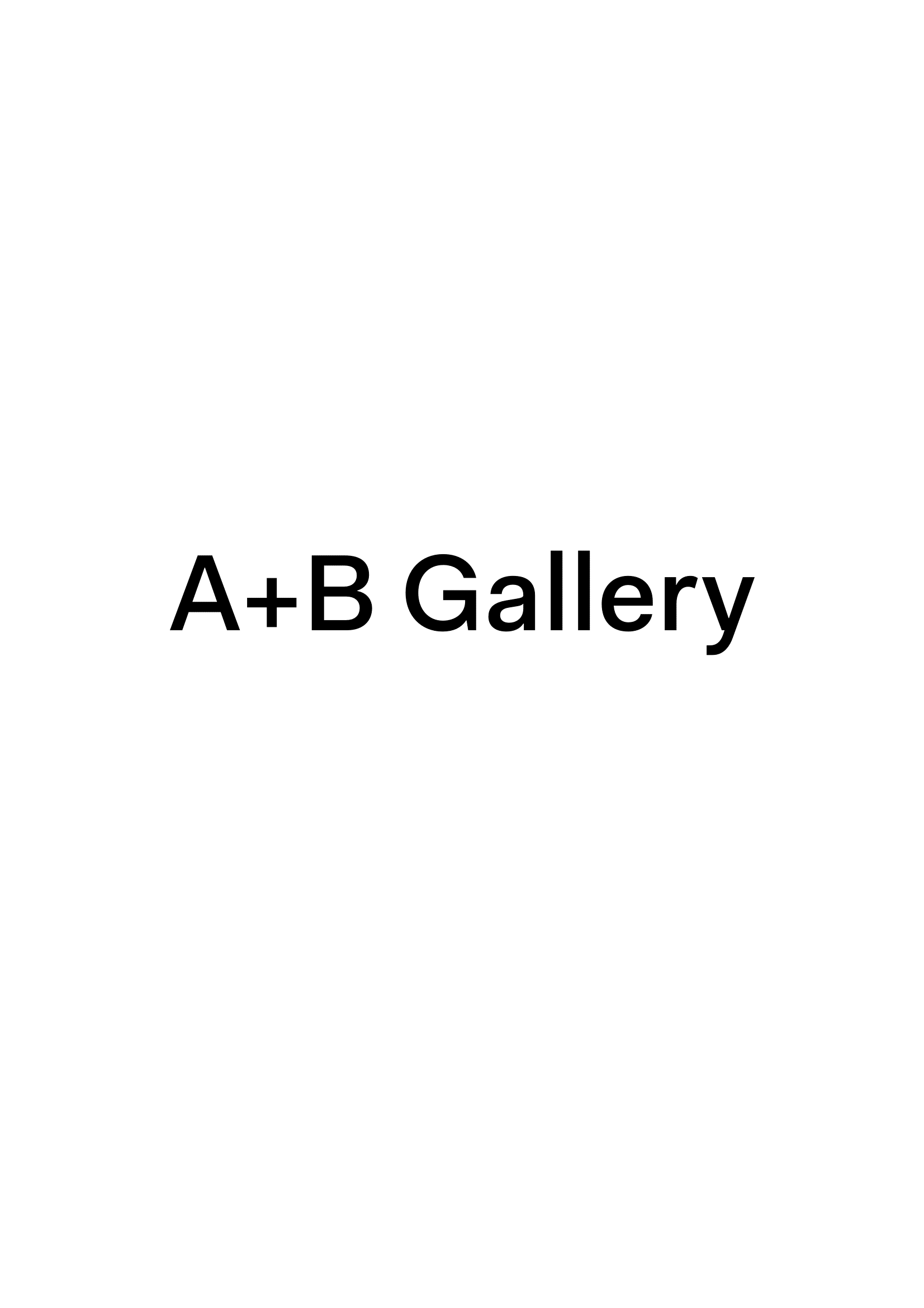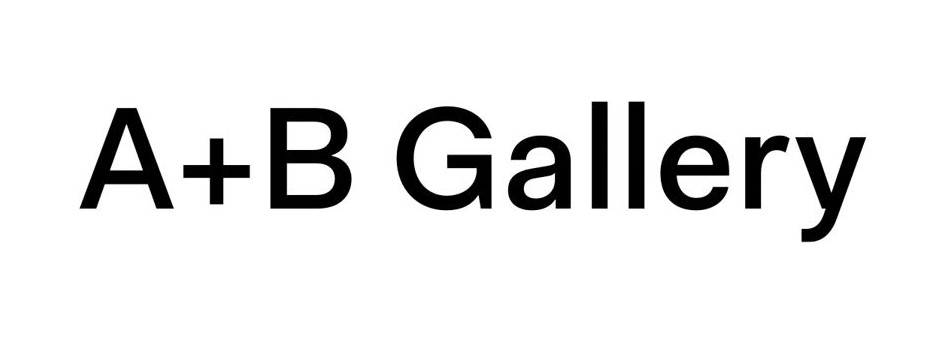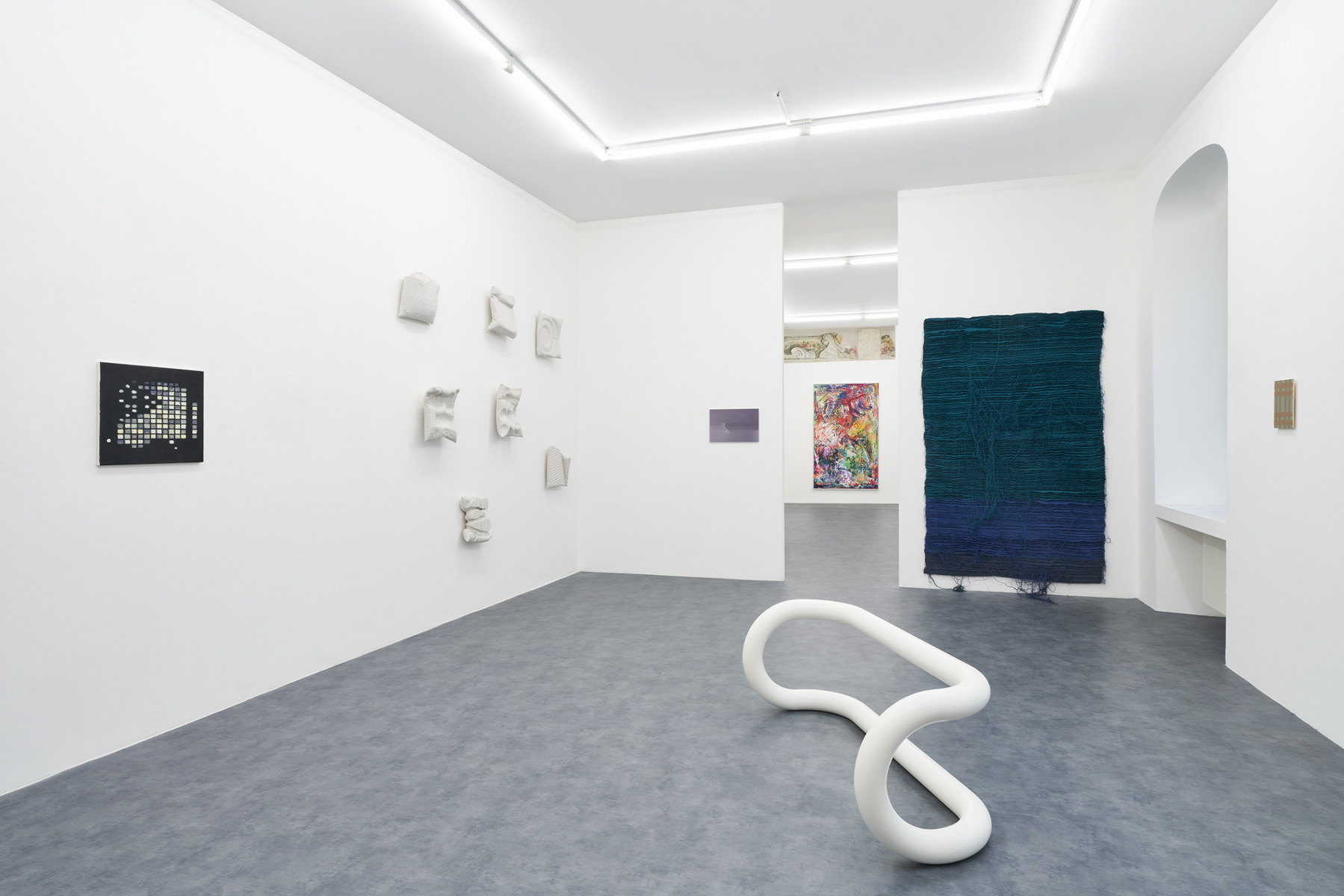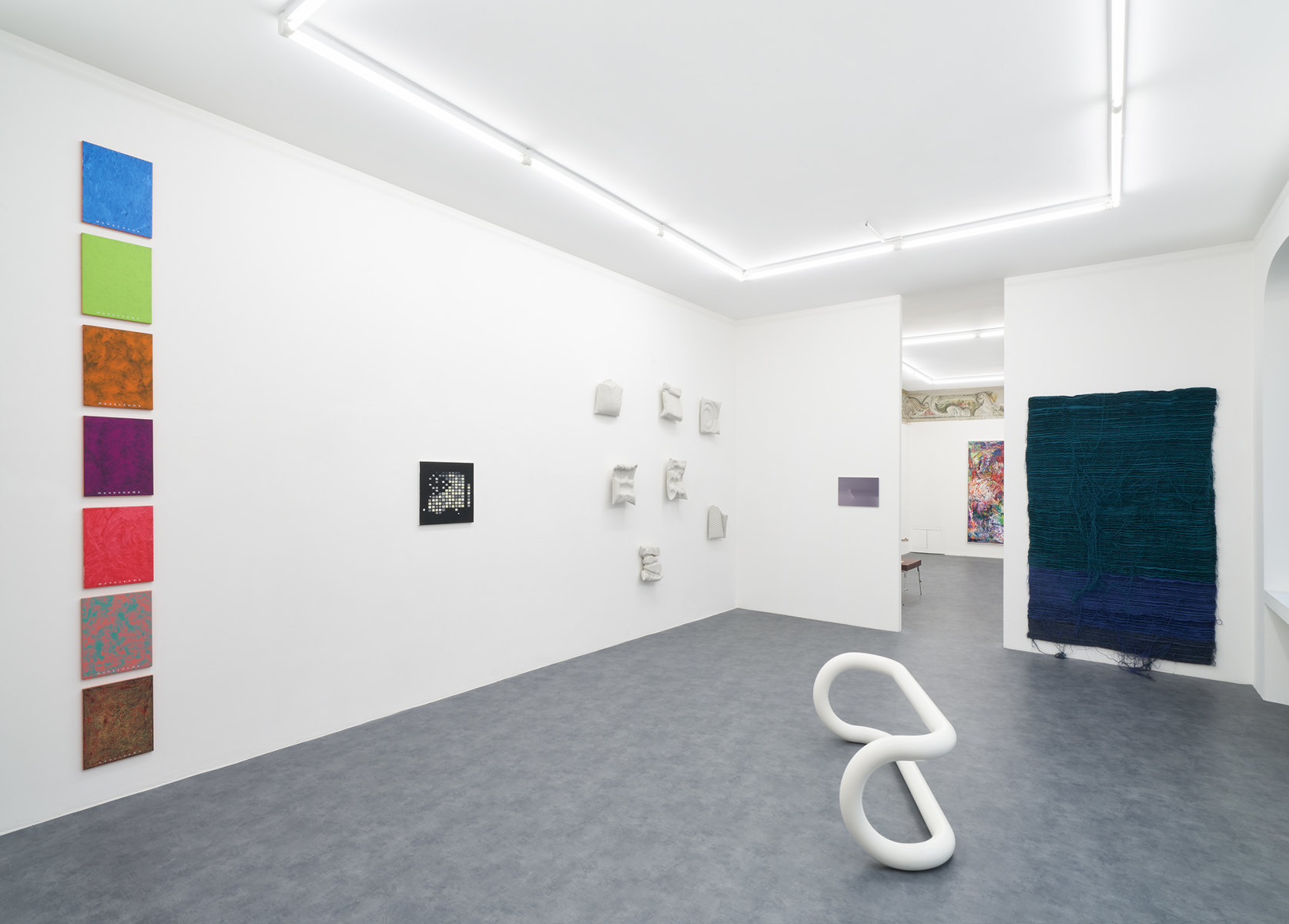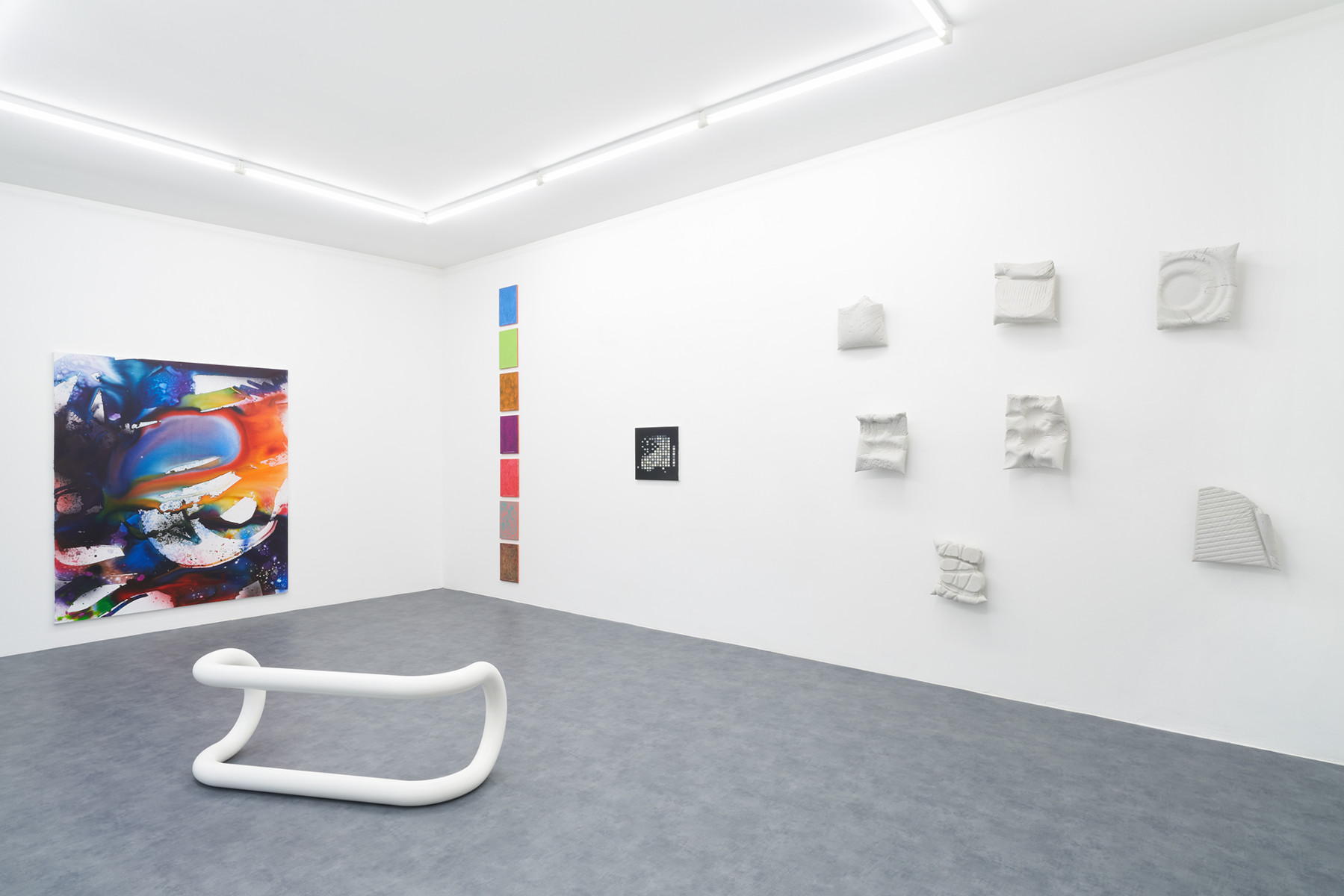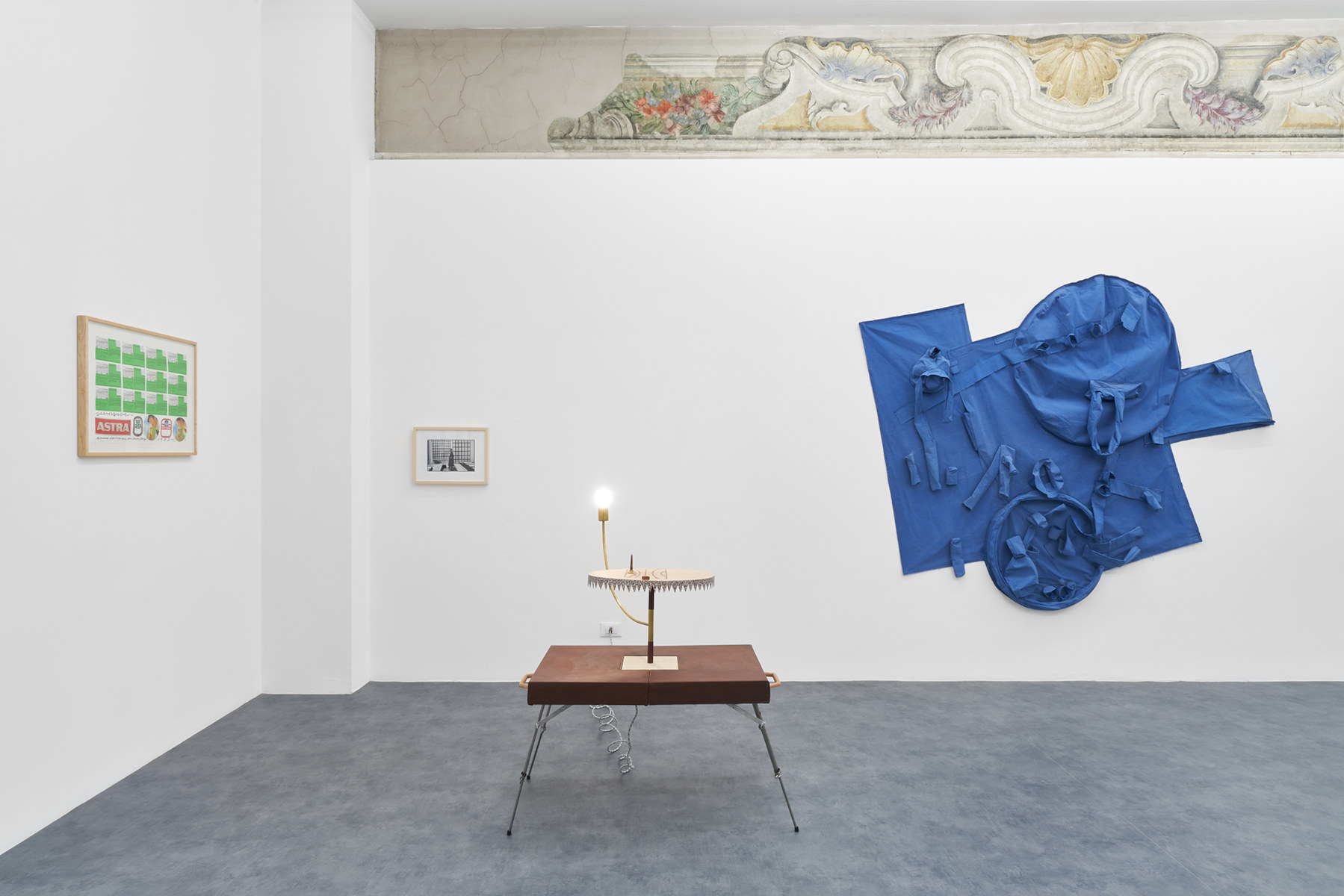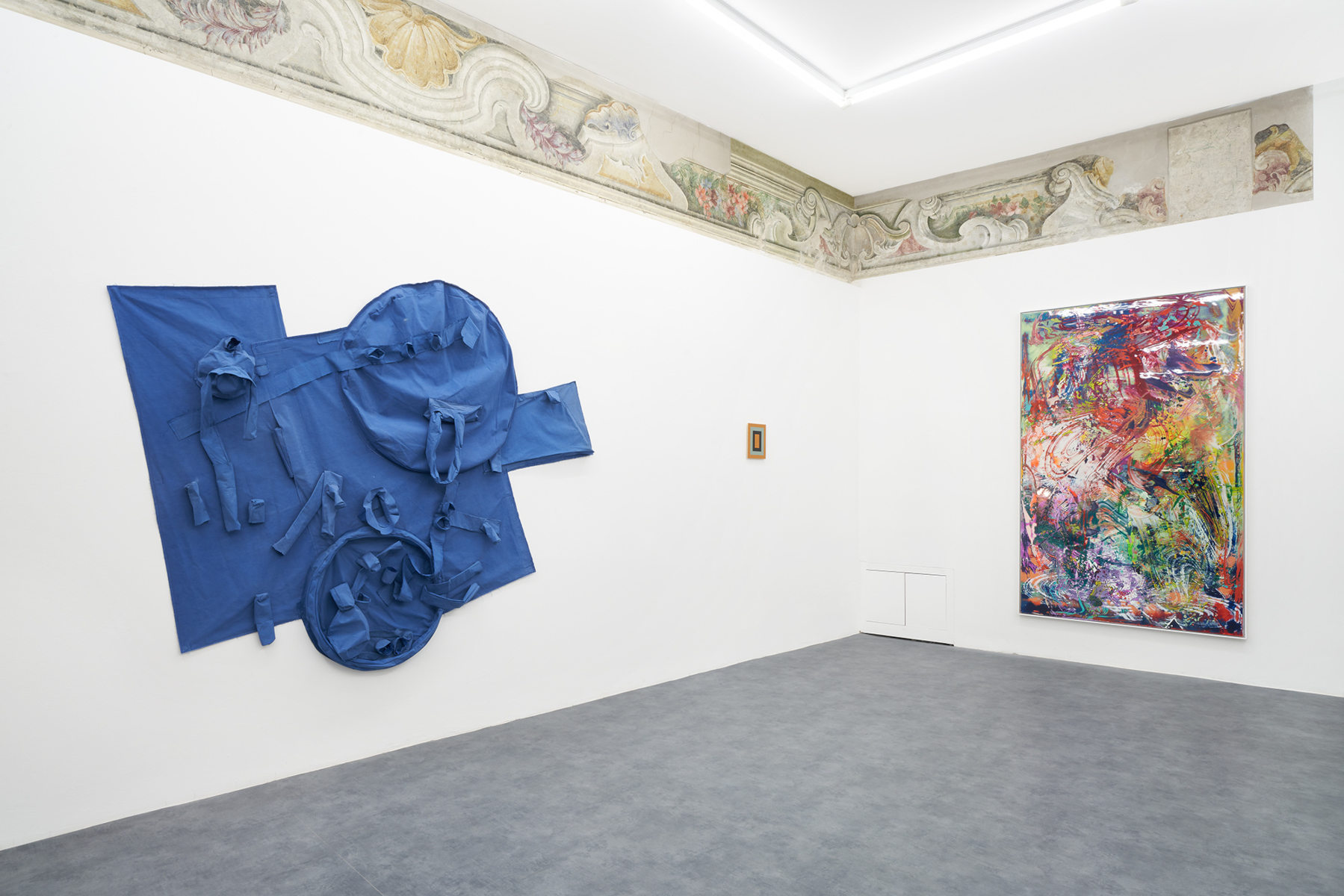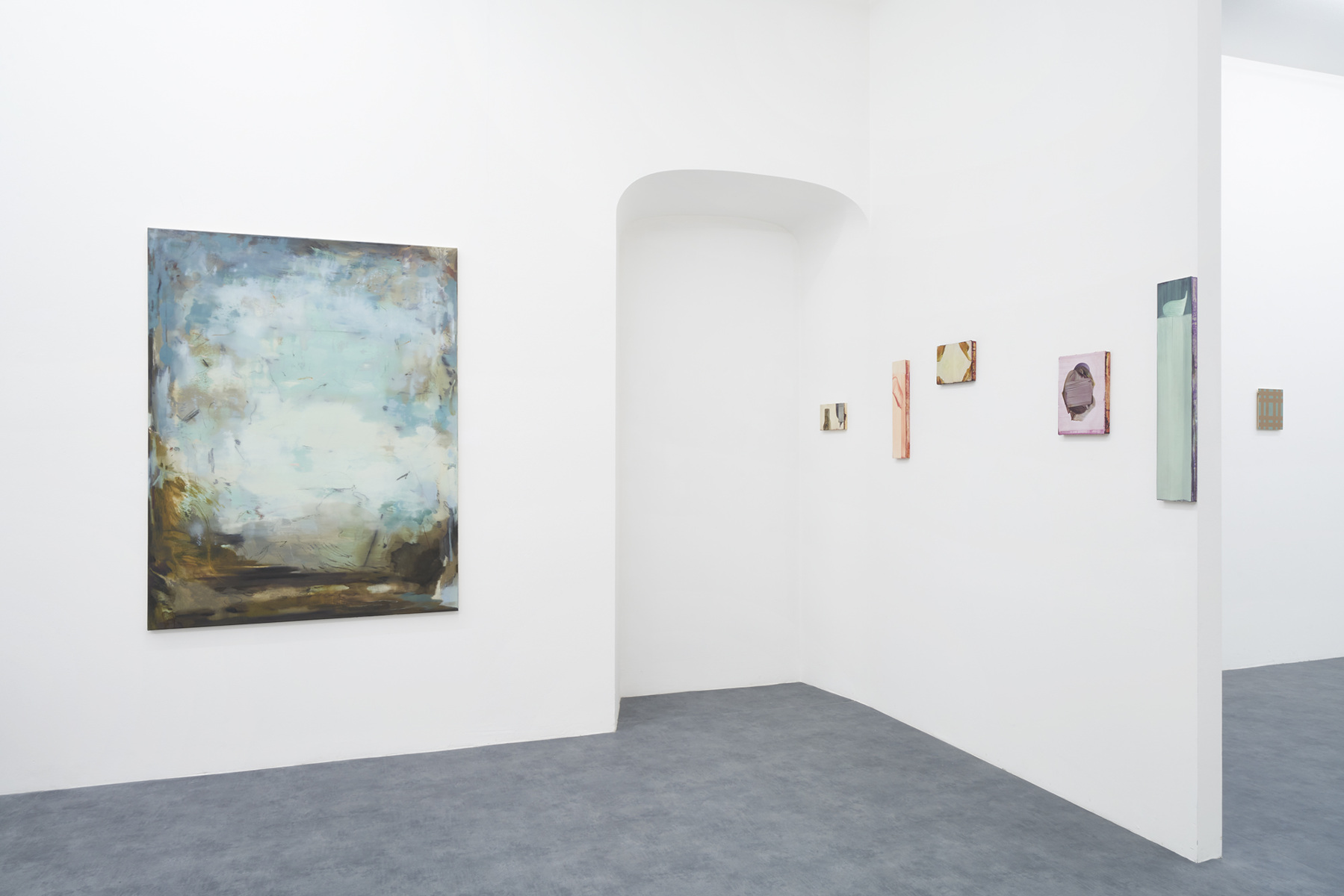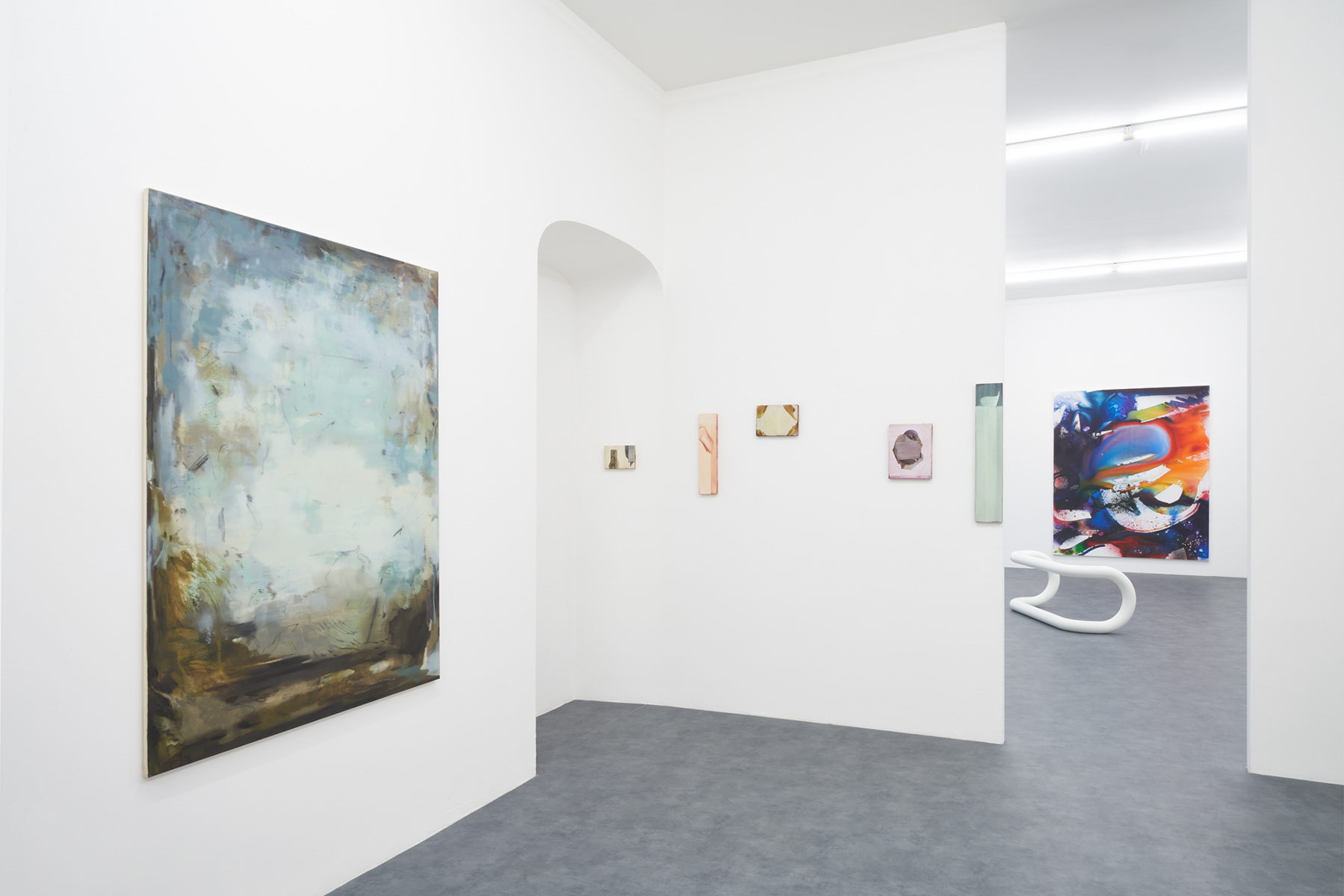15 → The Waiting Hall
Exhibition opening:
Thursday 15th October 2020 at 6pm
Saturday 24th October, “Au Language”,
Live performance by Fabrizio Saiu, at 8pm on request.
Until Saturday January 9th, 2021.
A+B gallery Corsetto Sant’Agata 22, step C, first floor, 25128 Brescia.
Thursday > Saturday 15.00 / 19.00 and by appointment
gallery@aplusb.it / www.aplusbgallery.it
press: Exibart interview ITA
–
Exhibition artists:
Hermann Bergamelli, Max Frintrop, Marco Gobbi, Silvia Hell, Tobias Hoffknecht, Osamu Kobayashi, Simon Laureyns, Marco La Rosa, Michele Lombardelli, Davide Mancini Zanchi, Tiziano Martini, Marco Neri, Nazzarena Poli Maramotti, Markus Saile + Hanne Darboven
–
At the end of the 20th century, the French thinker Félix Guattari warned us of the return of the question of subjectivity at the beginning of the new millennium. He encouraged all disciplines to combine their creativity to ward off the barbarism and mental implosion that would be the probable results of the acceleration that our technologically mediated lives carry with them. Today we observe how their forecasts are being fulfilled: we are witnessing an increase in psychological and social malaise due to the proliferation of phenomena and events that are beyond our control. In fact, we don’t even have time to think critically about them. We find ourselves in the midst of chaos without finding a door out of it.
15 → The Waiting Hall is a transitory moment. We could imagine it as a waiting place within a rhythmic pattern. Looking at it in its entirety, the contemporary art production is polyrhythmic, there are parallel stories that co-exist, minimal units and biological and thought aggregations which, often with a contradictory look, concur and give meaning to the next beat.
15 → The Waiting Hall is a set of works and thoughts linked together in the form of exhibition which displays the news from ateliers and some choices of galleries. This exhibition presents a new composition of artistic proposals that do not seek to establish a single meaning but, on the contrary, to expose the plural and divergent trajectories of the selected artists as well as their unique capacities to shape new sensibilities of contemporary art.
At 15 → The Waiting Hall, the obsessive mathematical poetry of Hanne Darvoben’s artist books coexists with the multiplicity of styles, materials and forms of the artists represented in our gallery. The presentation of a selection of books by Darvoben, corresponding to his production from the 80s / 90s, is the product of our collaboration with L’Arengario Studio Bibligrafico (which on October 17, at 5pm, opens the exhibition “Hanne Darvoben 1868-1980 ”, curated by Valentino Tonini and organized with Alex Bacon): these books, displayed in showcases, push us to consider the ruptures and continuities of the history of Western culture, opening, at the same time, new questions about the trend of the present time and its ambiguous relationship with the references of the past.
We are located on a threshold, it is still too early to know what the future holds for us. Our exhibition is an invitation to live our waiting situation without anguish, to break the pathological rhythms that block our capacity for aesthetic enjoyment and to tune into the polyphony of colors, meanings, lines of flight and alternative touches that come out to meet us.
HERMANN BERGAMELLI (Bergamo, 1990. Lives and works in Bergamo).
A+B Gallery presents for the first time in a gallery his sculptures-weavings made out of materials gathered and worked following nervous and liberating gestures, which are repeated and meticulously organized. Bergamelli focuses on repetition as a generative act, which finds some order in the organization of textile, used by drawing inspiration from minimalist paintings.
MAX FRINTROP (Oberhauser, 1982. Lives and works in Dusseldorf).
The unreleased works of Max Frintrop are born from the new gestural and coloristic developments in the pictorial field. The sensibility of Frintrop produces pictorial spaces through the expressive gesture and the dynamic use of colour. His painting style is based on the production of the concept of space with the aim of pushing forms to their limit with the support of a dynamic and articulated gesture in terms of colour and material.
MARCO GOBBI (Brescia 1985. Lives and works in Brescia)
His production starts from stories that evoke incomplete situations. Close to ancient crafts and manual work, he presents literary references and events through objects capable of telling a story full of memory. Every single work holds a very specific memory: personal and real testimonies that document his constant and different inspiration. Marco Gobbi deepens and manages to make the technique his own, transforming traditional processes into contemporary art.
SILVIA HELL (Bolzano, 1984. Lives and works in Milan).
An unreleased series by Silvia Hell will be presented in this exhibition: it encompasses photos coming from the research on sources developed during her residency Summer In at Futurdome, Milan. They are shots centered on the relation between light and architecture, the former appears in the animated videos Lightsourcing and the latter is part of her study at Futurdome. Her research is based on the production of tensions between conventional objectivity and presentation models. Her outcomes, as video, sculptures and prints of different typologies, comes from a range of values that face visual intuition.
TOBIAS HOFFKNECHT (Bochum, 1987.
Lives and works in Dusseldorf). A new sculptural work by Hoffknecht will be placed on the ground. The artist`s research on standards and on how these transform reality involves also the bidimensional area with new screen printings to be exhibited soon. His sculptures are made of steel, wood and plastic and embrace the tradition of Bauhaus and the Minimal Art. They display their simplicity, but on deeper examination they develop their own poetry. A poetry that arises from the material and from the transformation of language in new contexts.
SIMON LAUREYNS (Gent, 1979. Lives and works in Gent).
Laureyns uses worn-out fabric of camping tents, malleable material which can become an alphabet of three-dimensional forms, then transformed into painting and sculptural units. The artist uses the art of his painting as foundation, without utilizing paint, brushes or painters’ palette. His works emerge from the relation between his practice in the studio and the practice in the world, which occur in different moments, but which also affect each other incessantly. It is a relationship in which the artist finds a space for the definition of image.
MARCO LA ROSA (Brescia, 1979. Lives and works in Brescia).
A recent work of La Rosa, who is arranging a solo show in February 2021, has been selected: the deadly sins are re-interpreted through his exceptional material, concrete, and are displayed through the chapters dedicated to the Inferno of the Divine Comedy. One of the most evident aspects in his research is the bond with the philosophical domain, a conceptual origin not only of his series of sculptures, but also in general of the artist’s thought, his way of perceiving the world and the universal laws that rule it.
MICHELE LOMBARDELLI (Piacenza, 1969. Lives and works in the province of Piacenza).
The formally rigorous research of Michele Lombardelli takes inspiration from reality and from its graphical and geometrical reduction through a liberating process, which is then translated in a series of tempera and acrylic paint on canvas of medium and large size, but also and in particular on small previously prepared wood. Through the destructuring of real data, he outlines sign paths that never merge to form a unit of meaning but stops at the border of indefiniteness and vagueness. His works are the outcome of constantly essential and reducing research.
DAVIDE MANCINI ZANCHI (Urbino, 1988. Lives and works in the province of Urbino).
This artist focuses on the research of cultural stereotypes and ironically photographs with painting a cult object of school, the monochrome notebook. For a while, daily objects have been used as excuses to reach surprising and mocking freedom which is oriented towards different conceptual directions.His work often focuses on paradox and pays attention to social, cultural and anthropological mechanisms, which are depicted from an anomalous point of view, resulting in the emphasis of all their contradictions.
TIZIANO MARTINI (Soltau, 1984. Lives and works in the province of Belluno).
The large canvases painted by Tiziano Martini with layered and smoothed two-component polyurethane coating will be displayed for the first time in our gallery. Their distinctive visual ambiguity (marble, glass, photography?) arises from the complexity of the technique which implies the non-conventional use of technically well refined paints, whose surfaces are worked with high-performance tools. His work is a continuous reflection on the potentiality of painting, a dialogue with surfaces and materials, an everlasting shift from the default results. Instinctive and accidental, his painting acts as the recording of performative needs with always different and unpredictable visual outcomes.
MARCO NERI (Forlì, 1968. Lives and works and working in Lecce).
Neri is one of the best painters in his generation. Two iconic works were chosen for this first collaboration with A+B: a heavenly small-scale Mirabilandia and a couple of works on architecture contained in the series Nero di Marte. His painting tends toward the synthesis and the essential nature and matches reality with a limited number of forms and colours: straight lines, some angles, repetitions of strokes, circles, white, black and sometimes blue with shades of grey. Neri denies the illustrative function of painting and links figurative data to the logic of rhythm that aims to “multiply equivalence systems”.
NAZARENA POLI MARAMOTTI (Montecchio Emilia, 1987. Lives and works in the province of Reggio Emilia). Her subjects are classical: portrait, vase of flowers, and in particular, landscape. In particular, she is interested in the jagged, discontinuous and uneven shape. The landscape arises in the marginal area of the painting through spots and signs that evoke known elements (rocks, mountains, clouds or buildings), which alternate with brushstrokes that deny the figurative nature of the painting, orienting everything in the opposite direction, that is, towards abstraction.
MARKUS SAILE (Stuttgart, 1981. Lives and works in Cologne). The apparent absence of the pictorial body of Saile involves a set of presence that has to be established throughout time. Markus Saile’s artworks are contained in a light painting space, even if they show a homogeneous composition and an often-well-defined image. His works suggest a representation, but simultaneously hide it. Every work conceals its own complexity, which comes to light when all the strategies adopted during the executive phase are overcome.
HANNE DARBOVEN (Munich, 1941 – Hamburg, 2009). Hanne Darboven has always considered books as an integral part of her work. The encounter with Seth Siegelaub and other artists from the New York art scene (Carl Andre and Sol Lewitt for example) whom she met during his stay in the Big Apple in the late 60’s and early 70’s, contributed to an approach to the conceptual American aesthetic. From the 80s, Hanne Darboven inaugurated a new approach to art, beginning to integrate new signs and thinking about new ways of expression. Typical of this period are the transcriptions of entire volumes taken from the great German, English and French literature of the nineteenth and twentieth centuries. Calligraphy and writing take on an almost compulsive intimate connotation, and as she herself said on several occasions, she could not stop writing, not a single day passed without this “ritual”. The temporal research initiated in the works of the early years integrates with this new approach, and this is also evident from the projects on paper presented in this exhibition, from works such as “One Century – dedicated to Johann Wolfgang Goethe” from 1988 or “Evolution Leibniz” of 1986 up to “Quartett> 88 <” or the famous book published on the occasion of the Venice Biennale in 1982.
FABRIZIO SAIU (San Gavino Monreale VS, 1983. Lives and works in Brescia)
“Au Langage” is a confession, a dialogue between blind lovers, a tragic chorus, a series of exhaustive definitions, a question addressed to the listener, a naive speech about God, a sound kinky party, an acousmatic immersion, an ode to language and the martyrdom of language, a mass, a skein, a maximalist stratification, a network of algorithms and a performer.
